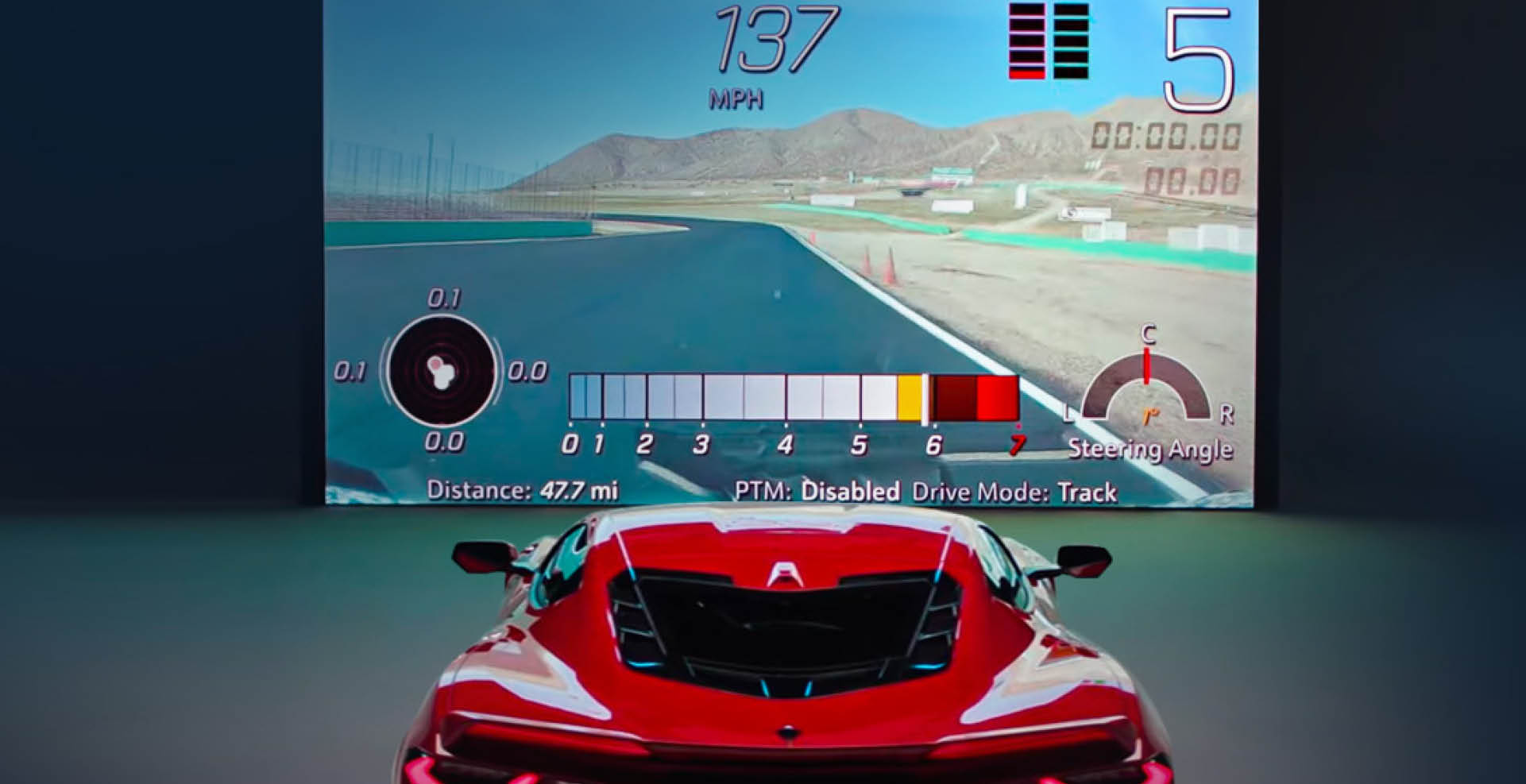General Motors has been producing performance cars for decades. The Corvette bloodline runs back to the early 1950s and is stronger than ever.

Overview
General Motors has been producing performance cars for decades. The Corvette bloodline runs back to the early 1950s and is stronger than ever. Now, in its eighth generation, the Corvette features all the latest electronics technology to which customers have become accustomed, including our Performance Data Recorder (PDR) video, data, and telemetry package.
PDR is a Cosworth-developed hardware and software system that enables users to record and analyse video and data, captured from their GM high-performance vehicles, giving the driver the ability to improve their performance on track. When used on the road, it also acts as an advanced dashcam synchronised with highly accurate data.
When GM was developing the seventh generation (C7) Corvette, the team investigated what owners of the outgoing vehicle were adding to their cars as aftermarket components. The team found that many drivers were fitting the cars with data logging and video recording equipment when venturing out on track. It was clear to GM that an optional data and video capture package needed to be an embedded feature, which is where we provided support.
We had already been working with GM’s motorsport division, providing them with our motorsport electronics for the C5.R and C6.R GT cars and series like the IndyCar championship. It was therefore a logical step for us to collaborate with them on an automotive version of our track-proven data logging solutions.
Challenges
Developing a third-party package that needs to be integrated within an OEM vehicle architecture always poses challenges; our three decades of experience in data capture and analysis in the motorsport sector helps us to mitigate any risks in developing new systems. The cross-over of race car data technology into road cars is made smoother with our approach.
The major challenge is the integration. Enabling the OEM systems and our own package to work and communicate with each other to provide a seamless, smooth operation for the user is the most crucial parameter to consider.
The way PDR works in current GM cars (the first and second PDR generations), is different to most infotainment apps as our ECU takes control of the infotainment screen and handles all graphics and user inputs. So, we had to make this monitor switch look as seamless as if it was just another app available to the driver.
Solutions
Through our solution, we managed to control the monitor switching seamlessly using the CAN bus for all the touch processes that effect the PDR.
Monitor switching is all about timing; the infotainment system informs the PDR to say that it is switching screens and sends a message over on the first-generation LIN bus and the second-generation CAN bus. The relayed message informs the system to switch screens and take control, meaning that the PDR will also be taking control of any touch presses that come through.
At this point, PDR is responsible for handling what’s coming through. When the user wants to leave the PDR displays, the PDR must communicate back to the infotainment system to say that it is time to hand back control. For example, there are temporary times when the infotainment would need to take control, for instance a navigation prompt or an incoming phone call. The main infotainment system will take the screen back temporarily and then pass control back to PDR.
In complex situations like these, we needed to make sure that no errors would occur during the changeover of control, so the user didn’t end up with a black screen because none of the systems were displaying anything.
Working with GM to develop PDR was a collaborative effort; they reacted quickly to any changes we required from them to get both systems working together. This is the true essence of a long-standing partnership.